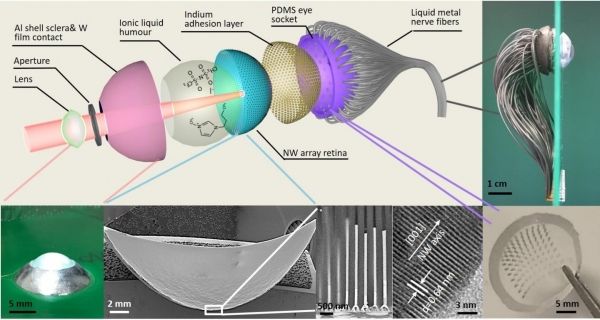An international team led by scientists at the Hong Kong University of Science and Technology (HKUST) has recently developed the world’s first 3D artificial eye with capabilities better than existing bionic eyes and in some cases, even exceed those of the human eyes, bringing vision to humanoid robots and new hope to patients with visual impairment.
Scientists have spent decades trying to replicate the structure and clarity of a biological eye, but vision provided by existing prosthetic eyes – largely in the form of spectacles attached with external cables, are still in poor resolution with 2D flat image sensors. The Electrochemical Eye (EC-Eye) developed at HKUST, however, not only replicates the structure of a natural eye for the first time, but may actually offer sharper vision than a human eye in the future, with extra functions such as the ability to detect infrared radiation in darkness.
The key feature allowing such breakthroughs is a 3D artificial retina - made of an array of nanowire light sensors which mimic the photoreceptors in human retinas. Developed by Prof. FAN Zhiyong and Dr. GU Leilei from the Department of Electronic and Computer Engineering at HKUST, the team connected the nanowire light sensors to a bundle of liquid-metal wires serving as nerves behind the man-made hemispherical retina during the experiment, and successfully replicated the visual signal transmission to reflect what the eye sees onto the computer screen.
Read more at Hong Kong University of Science and Technology
Image: An international team led by HKUST scientists has developed the world's first 3D artificial eye with capabilities better than existing bionic eyes and in some cases, even exceed those of the human eyes, bringing vision to humanoid robots and new hope to patients with visual impairment. (Credit: HKUST)


